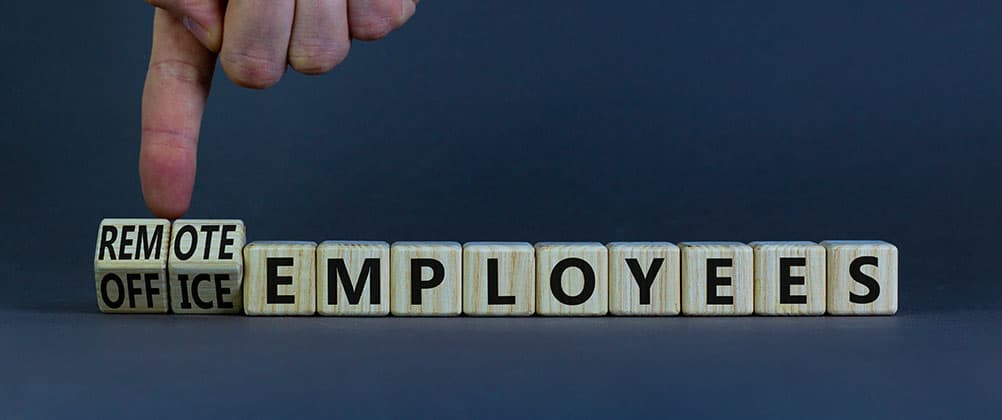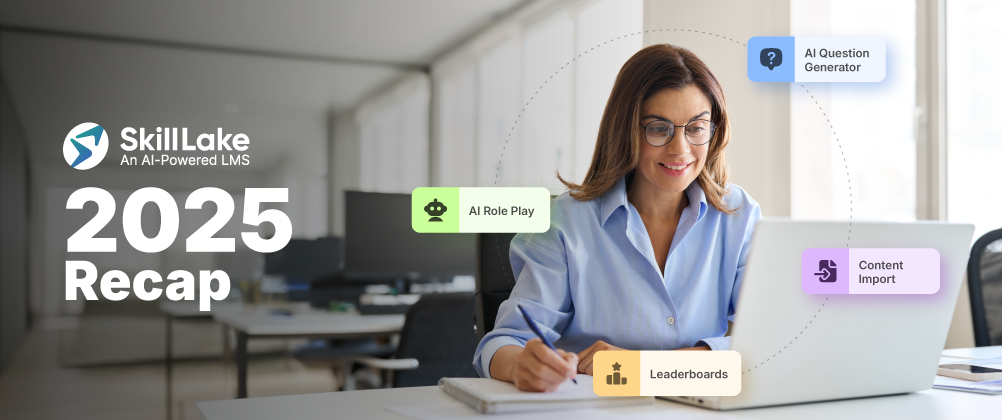Learning that Adapts: L&D Tips for the Hybrid Work Culture

Corporations have reopened their doors, and many have started embracing hybrid workplace models that incorporate features of both work-from-home and in-office models. The hybrid workplace is here to stay. According to a survey, nine out of ten businesses will combine in-office and remote work. “There is no going back,” says Pat Gelsinger, CEO of Intel Corporation.
A hybrid workplace presents new challenges to HR. When it comes to training employees, a hybrid workforce requires special consideration. Teams with remote and in-person contingents can make it cumbersome to schedule and deliver regular and effective training.
Furthermore, the human resource specialists will need to do more than focus on supporting the tools and technologies that keep a hybrid workplace ticking. They must establish a unified culture, determine how to handle onboarding and ensure employees understand the new workplace’s expectations.
All of this necessitates the development of new policies that dovetail with the new learning environment. It also entails a strong emphasis on Learning and Development resources (L&D) that are tailored to the needs of a hybrid workplace and each employee individually.
Bridging the Gap: Streamlining Learning for a Successful Hybrid Work Culture
We’ve seen countless examples over the last two years of how people and organizations have learned to adapt and advance in a remote work environment. The workforce has risen to the occasion, demonstrating considerably more versatility than imagined. But, in the long run, shifting to hybrid work means more than just instructing people to come to the office for a couple of days a week. It entails a new approach to interacting with and nurturing talent. When done correctly, it provides a chance to turbocharge your employees by broadening and improving the breadth and quality of the learning and development that gets delivered to them.
Organizations that thrive at this will have a competitive advantage, but you can’t just recycle what you’ve done for L&D in the past and expect it to work in a hybrid context. Because the nature of hybrid work is so much more dynamic, L&D programs must be aggressive. Let’s look at the need to implement efficient L&D in a hybrid work environment.
1) Flexible Learning – Following COVID-19, new sorts of hybridized on-site and remote work have evolved, involving new approaches to working and learning. When training and re-training staff, firms can help foster a flexible learning experience by integrating a hybrid learning culture.
2) Increase the Effectiveness of Corporate Training – A hybrid learning environment is very efficient for both learners and instructors. In addition to being adaptable, it aids in improving learning and the efficacy of corporate training. A mix of multimedia and instructional activities provides a rich, reproducible learning experience, which is why hybrid learning can be effective.
3) Efficient use of Resources – Numerous digital tools can augment hybrid learning. Incorporating this learning strategy into your culture makes it simpler for employees to utilize the tools at their disposal.
4) Reduces Training Costs – Hosting training, seminars, lectures, or conferences in a physical place is expensive for the organization. Employees can, however, access courses online through hybrid learning. They only require a computer or smartphone with an internet connection.
5) Effective time management – Including hybrid learning in your environment helps you manage your time more effectively. Time management is crucial when it comes to upskilling staff. Employees can utilize a hybrid mode to use their time better judiciously.
6) Promote Constructive Learning Environments – Effective learning occurs via peer interaction and on-the-job activities. Few learning experiences can compete with the closeness of face-to-face learning. Hybrid learning provides great flexibility to learn online anywhere globally and benefits from real-time engagement between peers.
Can an LMS Bridge the Learning Gap in a Hybrid Work Model?
While evaluating the use of a hybrid and remote learning strategy, we must ensure its adaptability and agility. Nonetheless, we should recognize and value the significance of simplicity and clarity. Therefore, keep the following suggestions in mind when designing and executing L&D for your hybrid workforce:
a) Create a curriculum adaptable and successful in virtual and in-person situations – It may be tempting to create in-person solutions and then transfer them to virtual platforms, but this will almost always result in reduced effectiveness.
b) Establish agile in-person sessions – Make sure in-person classes have the resources to interact with virtual learners. Investing in high-quality video conferencing technology is an excellent way to elevate your learning programs.
c) Be inventive – Since hybrid learning is unfamiliar to most, it is imperative to employ unique methods to personalize the training to suit the needs of learners. This can be accomplished through bespoke branding, themes, and engagement activities.
d) Rethink blended learning – L&D teams must reconsider their approach to blended learning to survive in a hybrid workplace. Traditional blended learning disseminates information from the teacher to the student, ignoring the advantages of collaborative learning, such as enhanced knowledge retention and higher engagement. When you transition to a hybrid workplace, you may take a more practical approach to blended learning—rather than thinking of it as a combination of in-person and online training.
e) Introduce interactive learning approaches – Interactive learning promotes brain activity and better learner engagement. Your staff will learn more if learning is actively engaging rather than passive.
As firms continue to adopt hybrid work settings as a viable alternative to traditional in-office employment, they must design L&D initiatives that are accessible to all learners.
Beyond the Office: Skill Lake Enables Hybrid Work Learning
Skill Lake aims to holistically educate people by combining life skill training, character-building, and regular job-based learning. It is designed for enterprises and is easy to deploy on private servers or the cloud. The system includes various elements such as blended learning, personalized learning journeys, content authoring, resource library, content authoring, and gamified learning, which make it the right L&D choice for a hybrid work culture.
Skill Lake promotes employee engagement by developing personalized learning experiences for individuals based on their particular requirements and enabling seamless learning anywhere, at any time, via secure mobile applications. Skill Lake can also be customized to your brand and organizational processes and integrated with your existing applications. All of this and more makes Skill Lake the one to choose for all of your hybrid L&D requirements.
Take a quick demo to experience Skill Lake LMS.
Build a culture of continuous learning with Skill Lake’s state-of-the-art people development platform. Give your employees professional training to help them excel in their job roles and propel your business to greater efficiency and success.
Start Today

Sachin Krishna
Sachin is a passionate advocate of e-learning with a profound knowledge of the field. He regularly writes compelling content that captivates readers and works to spread awareness of learning solutions.